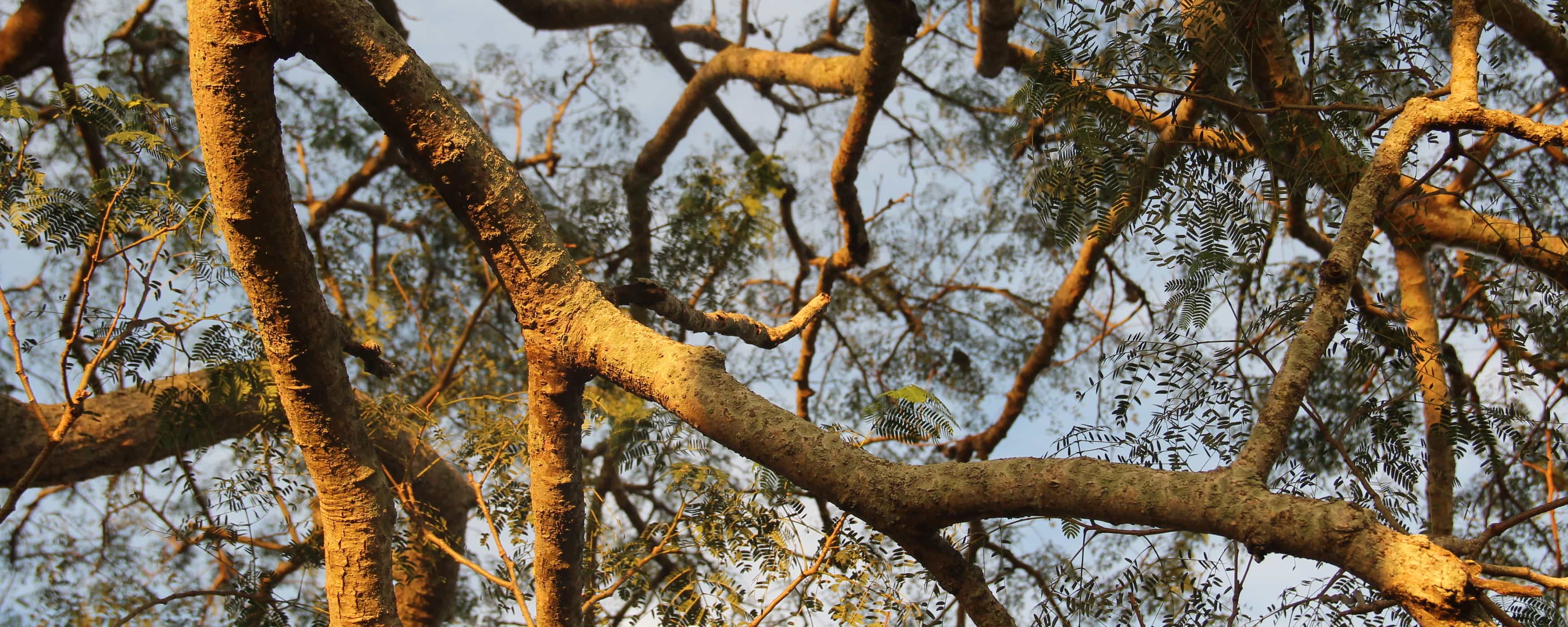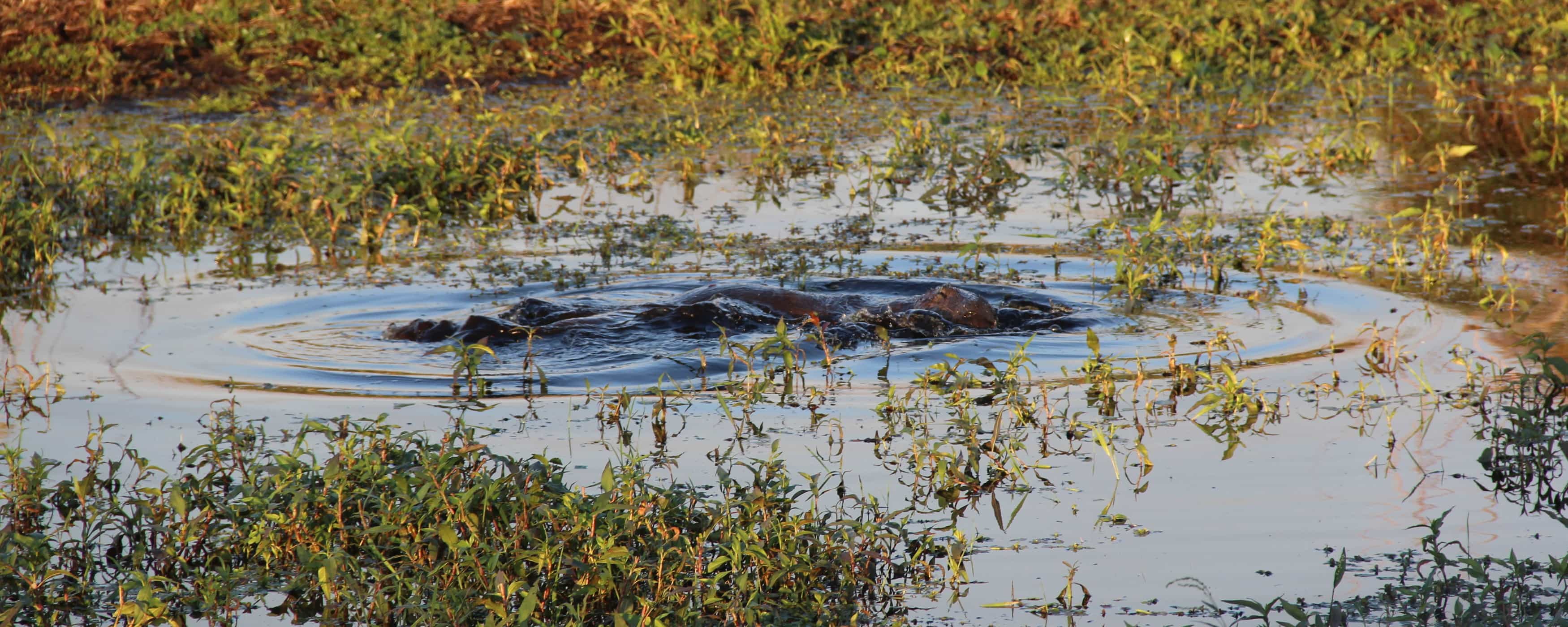

A protected natural area
Douglas and Kristine Tompkins played a fundamental role in creating Iberá National Park. They purchased 158,000 hectares of land adjacent to Iberá Provincial Park and then donated those lands to the Argentine state to create the national park. The wetlands harbor an impressive variety of vegetation with more than 1700 plant species.
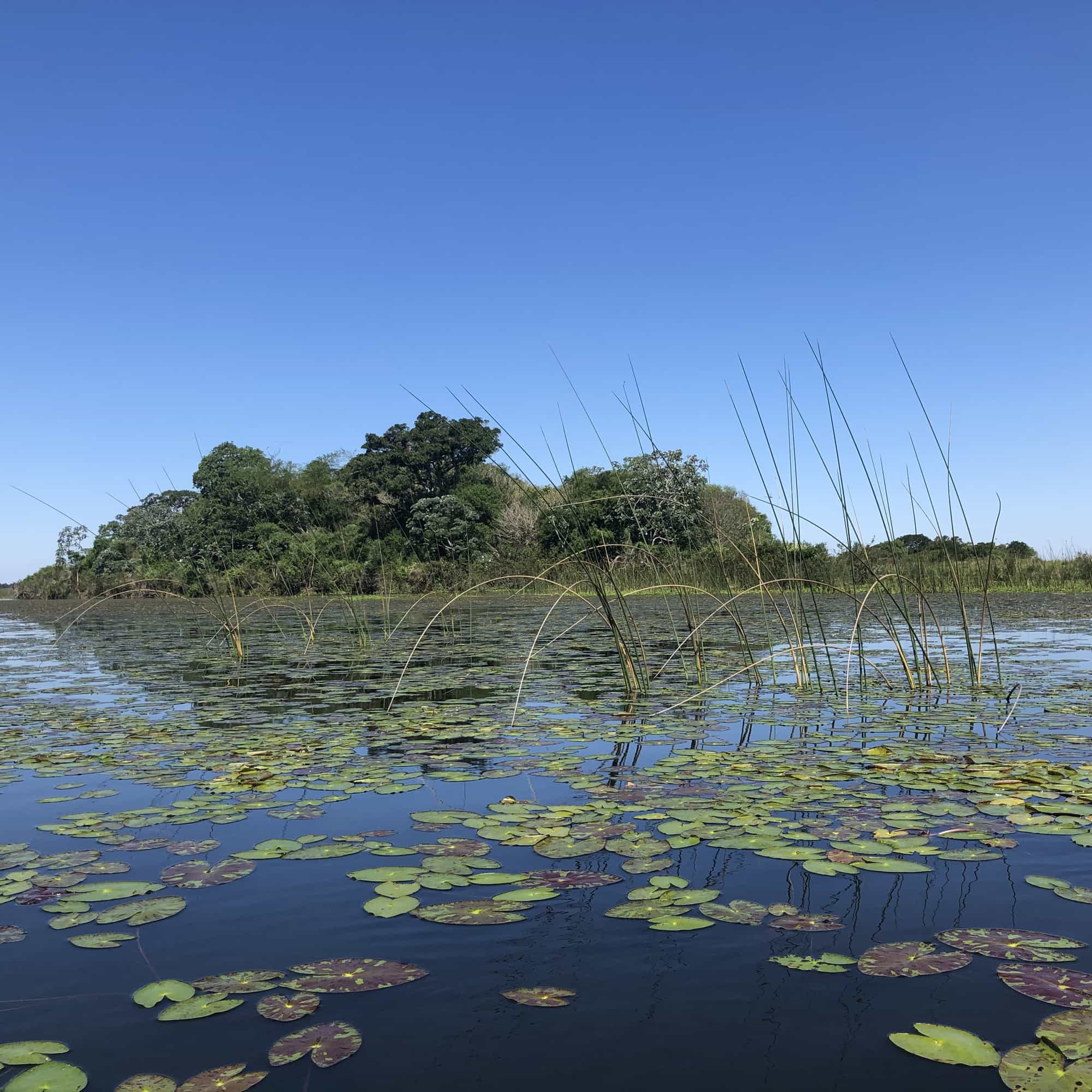
In the water
The permanently flooded areas are dominated by aquatic plants such as the majestic giant water lily along with water hyacinths, water lettuce and duckweed that form true floating carpets of intense green color on the surface of lagoons and wetlands.
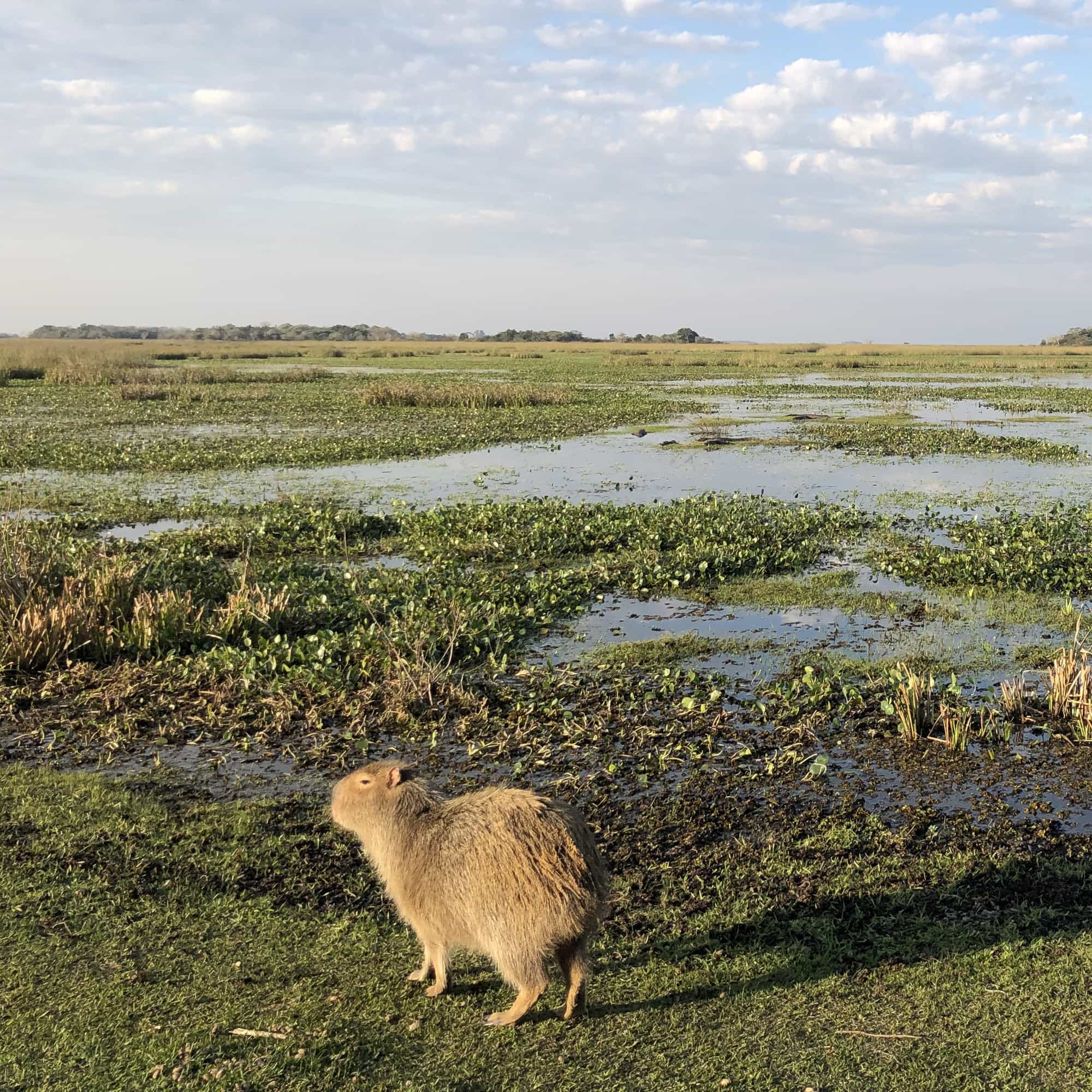
Between water and land
In the transition zones, grasslands proliferate, where piri and espartillo grasses stand out. This intermediate strip also harbors species such as cattails and various carnivorous plants like sundews, adapted to nutrient-poor soils.
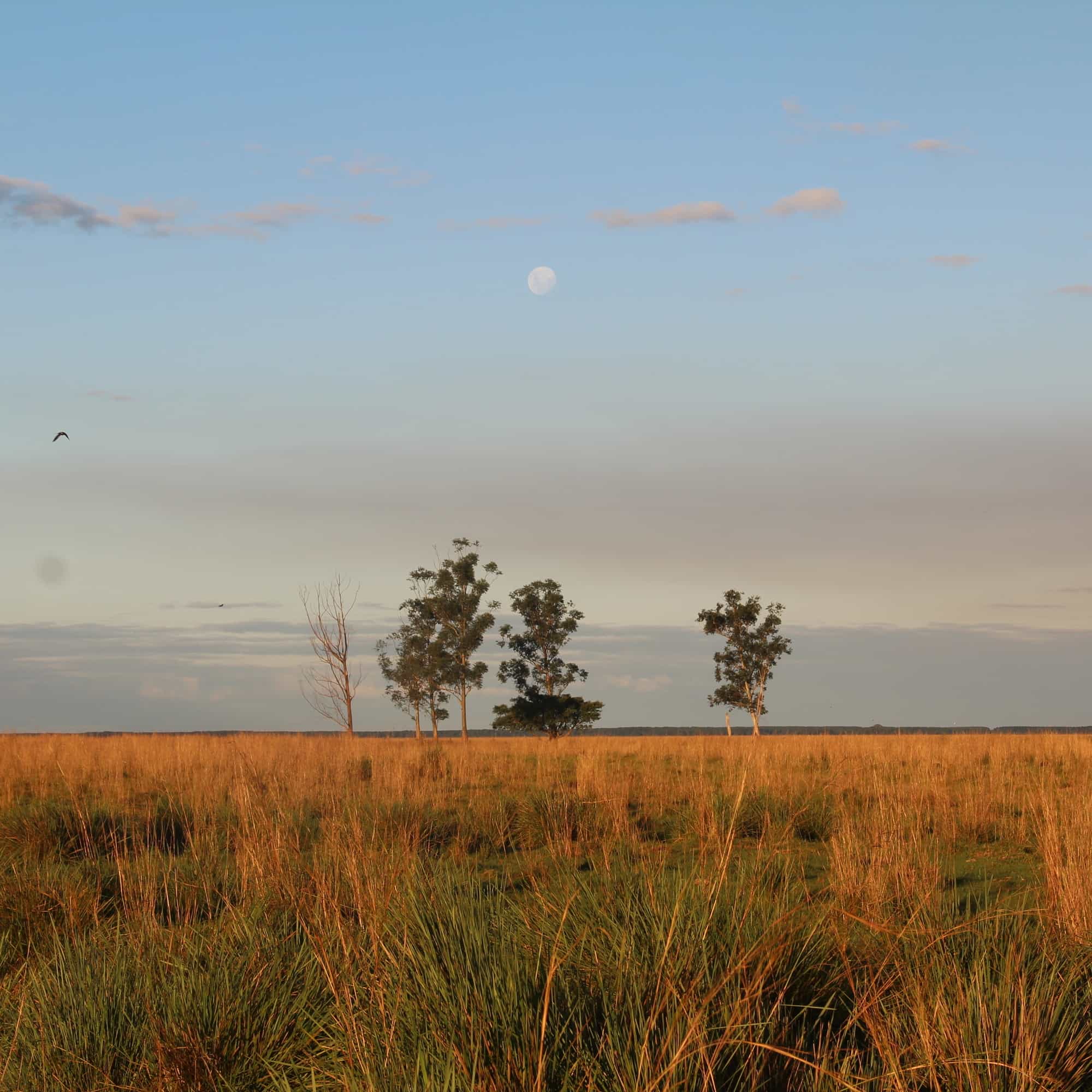
On dry land
The higher areas feature forest formations and savannas where caranday palm groves predominate, combined with tree species such as algarrobo, red quebracho and lapacho. This terrestrial environment is completed with grasslands where a great variety of herbs and grasses flourish.
An area full of life
Iberá National Park is an important wetland in Corrientes province, Argentina, which stands out for its rich biodiversity and its role in the conservation of native fauna. The nature reserve covers an area of 1,300,000 hectares and harbors a great variety of species, including some endangered ones.
Emblematic birds

Red
Macaw
Extinct 150 years ago, it has been reintroduced; scarlet red plumage, yellow and blue on its wings

Jabiru
Stork
The Jabiru is the largest stork in South America, distinguished by its distinctive red band on the neck

Cock-tailed
Tyrant
The cock-tailed tyrant is the emblematic bird of Iberá park, the male is recognized by its long tail with 2 feathers

Amazon
Kingfisher
Colorful bird that feeds on small fish in the wetland waters

Roseate
Spoonbill
Characterized by its flattened, spoon-shaped beak, which it uses to filter food in shallow waters.

Caracara
Bird of prey, scavenger, that cleans the environment
Emblematic animals

Giant Otter
Large aquatic mammal, excellent swimmer that feeds mainly on fish and lives in family groups

Jaguar
The largest feline in America, reintroduced to the park after decades of absence, symbol of ecological restoration

Deer
Two types of deer can be found: the marsh deer, the largest in South America, and the pampas deer which has been reintroduced

Anteater
Mammal that feeds exclusively on ants and termites, uses its powerful claws to break open ant hills

Capybara
Also known as carpincho, it is the largest rodent in the world and an emblematic species of the region

Caiman
Two types of caimans are found, the overo and the black; you can observe them during the day, sunbathing, at the water's edge
At the estancia
Around the Estancia, all this emblematic fauna can be observed, for example during a cabalgata with local gauchos.
